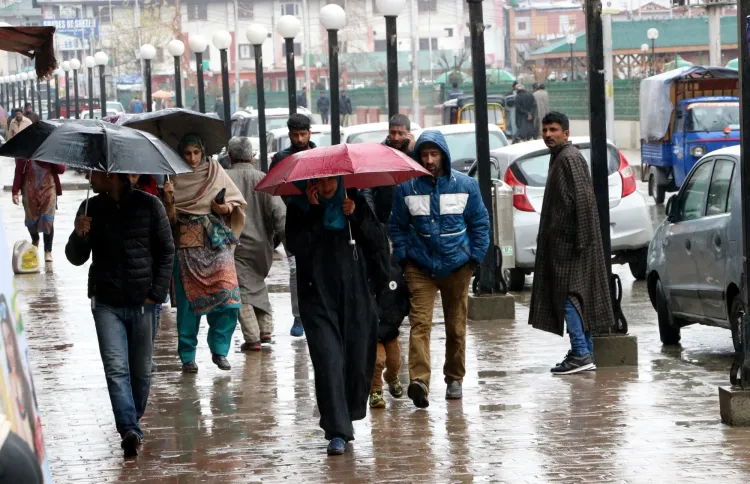With Rainfall Diminishing, Flood Risk in J&K is Nullified

Synopsis
Key Takeaways
- Weather conditions improved in Jammu and Kashmir after heavy rains.
- No flood threats reported despite increased water levels.
- Residents advised to remain cautious of flash floods and landslides.
- Weather advisory suggests planning around upcoming rain and snow.
- Rainfall deficit in the region noted at 30 percent.
Srinagar, April 20 (NationPress) Following a stretch of relentless and heavy rainfall, marked by thunder and strong winds, the skies finally cleared on Sunday, ending the period of persistent wet weather in Jammu and Kashmir.
Temperature readings showed Srinagar at 8 degrees Celsius, Gulmarg at 1.4 degrees, and Pahalgam at 5.6 degrees as minimums.
In Jammu, the temperatures were recorded at 26.2 degrees Celsius, with Katra at 21.5 degrees, Batote at 10.3, Banihal at 6.7, and Bhaderwah at 10.2 degrees.
Despite the rise in water levels across all rivers, streams, and lakes in J&K due to the heavy rains, officials have dismissed any flood concerns in the union territory arising from the current severe weather.
However, residents are urged to exercise caution regarding flash floods, landslides, and mudslides in susceptible areas.
A weather advisory from the Meteorological (MeT) department indicated that on April 20, there would be predominantly cloudy conditions with light to moderate rain/snow (in higher altitudes) in various locations, with isolated to scattered areas potentially experiencing moderate to heavy rain/snow until the late evening of the 20th. On April 21: generally cloudy with a chance of light rain/thunder at scattered locales. From April 22-28: generally dry weather is expected with cloudiness around April 25.
The department further advised, "All relevant parties should plan accordingly and adhere to the Admin/Traffic advisory. Farmers are recommended to halt farm operations until April 21. There is a risk of landslides/mudslides/shooting stones in vulnerable areas. It is wise to remain indoors/safe during thunder/lightning events.”
The Kashmir Valley has experienced a significant rainfall shortage during January, February, and March, with experts estimating the deficit at 80 percent.
With the recent precipitation over the last three days, the total rainfall deficit for April this year is now estimated at 30 percent.










